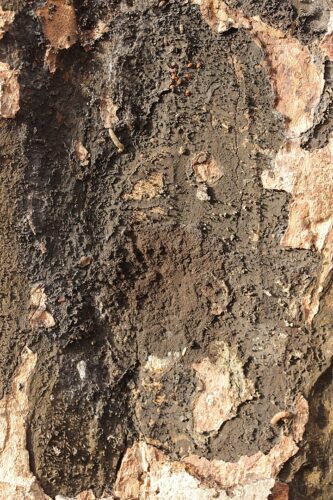Sooty bark disease, this fungus primarily affects ma

Sooty bark disease (Cryptostroma corticale). This fungus primarily affects maple trees and occasionally occurs on birch and lime trees. The fungus was identified in England in 1940; only since the early twenty-first century has sooty bark disease also been found in parts of Europe.
The fungus’ spores are spread by the wind. The fungus lives on tree bark and mainly affects dead trees. However, after a period of drought and high temperatures, living trees can also be affected. In trees weakened by drought and heat, the spores penetrate the wood through wounds and stem ends. The spores germinate and fungal threads grow within the trunk of the tree. Sooty spots appear on the trunk and pieces of bark detach from the branches. As the water supply is interrupted by the fungus, the condition of the tree deteriorates rapidly: leaves wilt, branches die. There are brown-black fungal threads underneath the peeling bark. Eventually, the tree dies, with an increased risk of branch breakage.
Health risk
Inhaling the spores of this fungus can lead to chronic inflammation in the lungs, resulting in scar tissue. For gardeners, tree surgeons and forest workers, sooty bark disease is included among occupational diseases. Wearing protective equipment (mask, goggles) is a requirement when sooty bark disease is suspected. Limit moving affected ma
